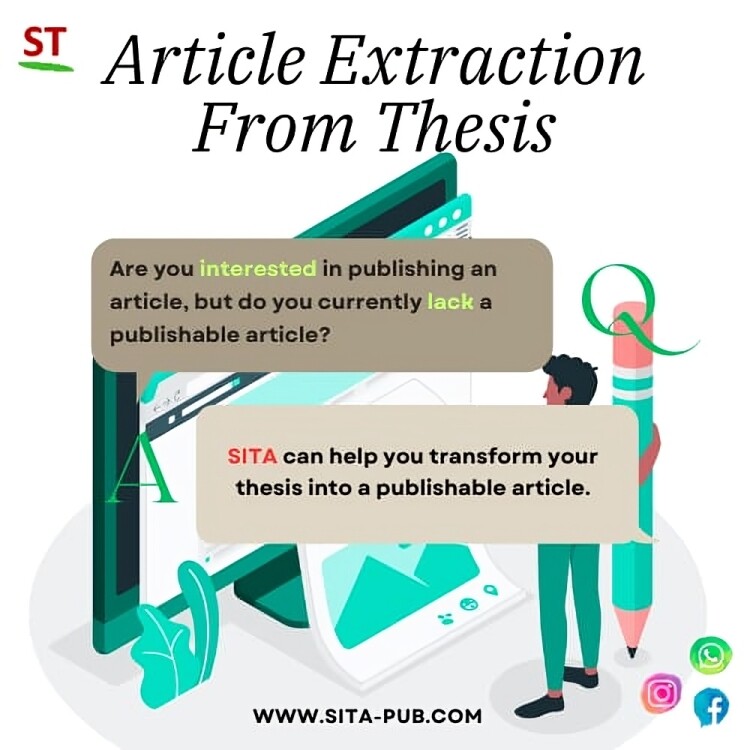From Thesis to Publication: Streamlining the Path to Sharing Your Research



A thesis or dissertation is the culmination of years of intensive research and study, typically required to complete a graduate degree program. The standard structure includes:

In contrast, a journal article has a more concise and focused structure, designed to concisely communicate the research and its significance to a targeted academic audience. The typical journal article format includes:
Structural Element | Thesis/Dissertation | Journal Article |
|---|---|---|
Title Page | Includes the full title, author's name, degree program, university, and date of submission | Includes a concise, informative title that captures the study's focus |
Author Information | Lists the author's name and academic affiliation | Includes the author's name, academic/professional affiliation, and contact information |
Abstract | Provides a comprehensive overview of the entire research project, typically 150-350 words | Offers a succinct summary of the study's objectives, methods, results, and conclusions, usually 150-250 words |
Keywords | May or may not include a list of keywords | Includes 3-5 keywords that accurately reflect the study's content |
Introduction | Presents the research problem, background information, and the overall purpose and significance of the study | Establishes the research context, highlights the knowledge gap, and clearly states the study's objectives |
Literature Review | Provides an in-depth analysis of the existing research relevant to the study topic | Concisely reviews the most relevant and recent literature to provide a foundation for the current study |
Methodology | Describes the research design, data collection, and analysis methods in extensive detail | Outlines the materials and methods used, including any statistical analysis techniques |
Results | Presents the findings of the study in a comprehensive manner, often including numerous figures and tables | Succinctly reports the key findings, with selective use of tables and figures to support the narrative |
Discussion | Interprets the results, examines their significance and implications, and discusses the study's limitations | Analyzes and interprets the results, compares them to previous research, and discusses the study's strengths, limitations, and implications |
Conclusion | Summarizes the study's key findings, highlights its contributions, and suggests future research directions | Concisely restates the study's main conclusions and significance |
References | Includes a comprehensive list of all sources cited throughout the thesis/dissertation | Lists only the references directly cited in the journal article |
Appendices | May include additional data, supplementary information, or other supporting materials | Generally does not include appendices, as the journal article format is more concise |

Saves time by leveraging existing research and content from your thesis
Enhances your credibility and career advancement through journal publication
This can lead to new collaboration opportunities as your work becomes more widely known
Increases the visibility and impact of your research within the scholarly community
Streamlines the submission process since the foundational work is complete
Refining your work effortlessly in peer review by using thesis content

Are you looking to publish academic articles but don't have the time or resources to write them from scratch?
Instead of starting from square one, why not extract journal articles directly from your existing thesis or dissertation? Our team of experienced researchers can work with you to transform your thesis work into polished, ready-to-publish articles. This efficient approach allows you to leverage the extensive research you've already completed while maximizing the impact and visibility of your scholarly contributions within your field. Contact us to start the process.
Start by sending us your thesis file and any relevant information, and we'll provide you with a quote for the article extraction service.
Our team will review your thesis document to determine how many high-quality journal articles we can extract from the existing research and content.
Once we've identified the potential articles, we'll send you the results for your review and final confirmation before beginning the extraction process.
After completing the article extraction, we'll deliver the polished, publication-ready articles directly to you, saving you time and effort compared to writing them from scratch.
If you have any questions, inquiries, or would like to learn more about our services, please don't hesitate to reach out to us. Our dedicated team is ready to assist you.